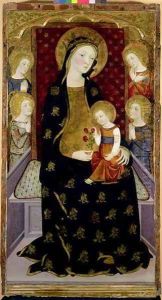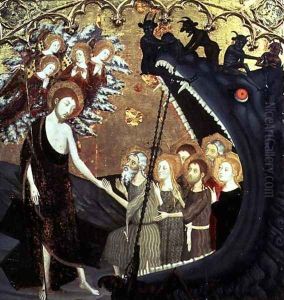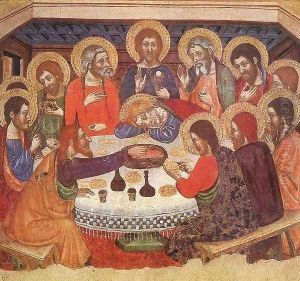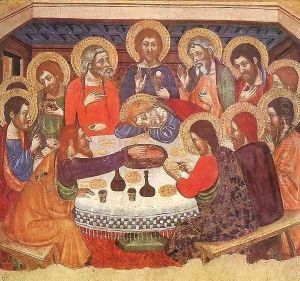Jaume Serra Paintings
Jaume Serra was a prominent Gothic painter, active in the late 14th and early 15th centuries in the Crown of Aragon, a medieval and early modern kingdom in what is now Spain, France, and Italy. Although the exact details of his life, including his birth and death years, are not precisely known, historical records suggest he was born around 1350 and died around 1405. Serra was part of a family of painters, which included his brothers Pere and Francesc, who were also notable artists of their time. This familial connection suggests that painting and art were deeply rooted in his upbringing and early life experiences.
Jaume Serra's work is characterized by its adherence to the International Gothic style, a phase of Gothic art which spread across Western Europe in the late Middle Ages. This style was known for its elegant and intricate approach to the human figure and the use of bright, vivid colors. Serra's contribution to this movement is significant, as his paintings exemplify the delicate linearity and graceful forms that were popular during this period. His art often depicted religious themes, common in the era, focusing on scenes from the life of Christ, the Virgin Mary, and the saints. These works not only served a devotional purpose but also acted as a medium through which the theological and spiritual ideas of the time were communicated to the public.
Despite the challenges of attributing works to artists from this period, due to the lack of signed or documented pieces, several paintings have been confidently attributed to Jaume Serra through stylistic analysis and historical documentation. These include altarpieces and panel paintings that have been identified in various churches and collections across the Crown of Aragon. His paintings are noted for their narrative clarity, emotional depth, and the detailed portrayal of textiles and patterns, which add a rich texture to his compositions.
Jaume Serra's legacy in the history of art is marked by his contributions to the development of the International Gothic style in the Iberian Peninsula. His work reflects the transition in European art from the medieval to the early modern period, bridging the gap between the Byzantine and Renaissance artistic traditions. Despite the limited information on his life, Serra’s surviving works continue to be studied and appreciated for their beauty and historical significance, offering insights into the religious and cultural contexts of late medieval Spain.



